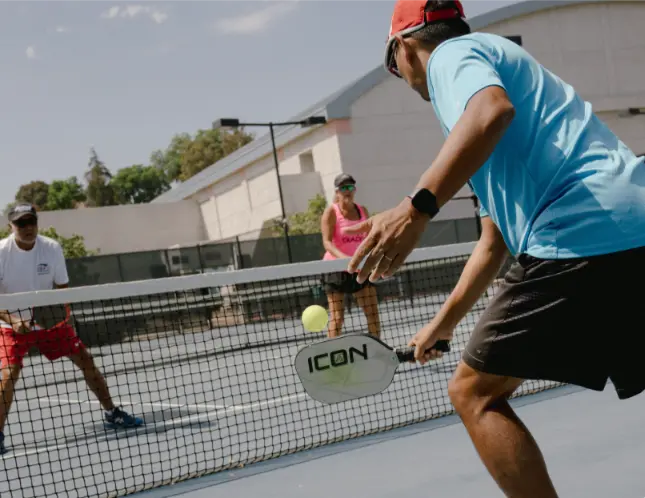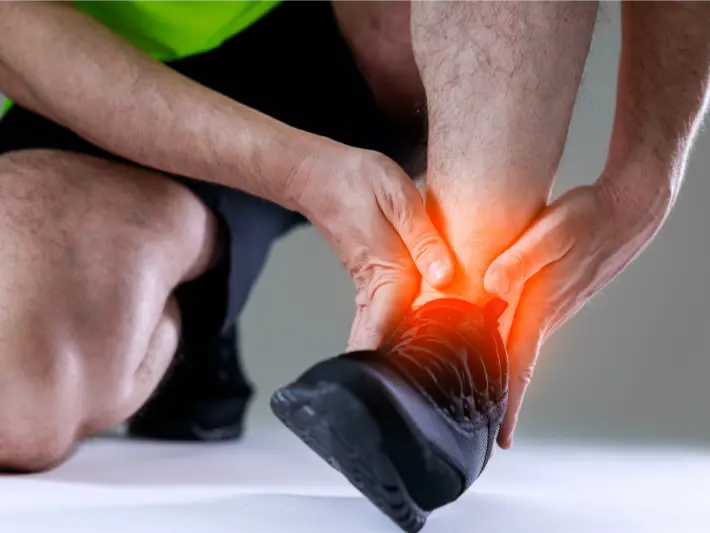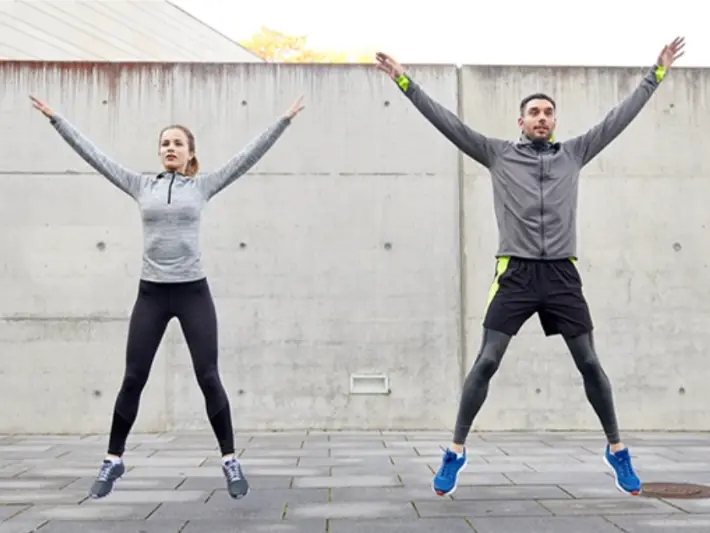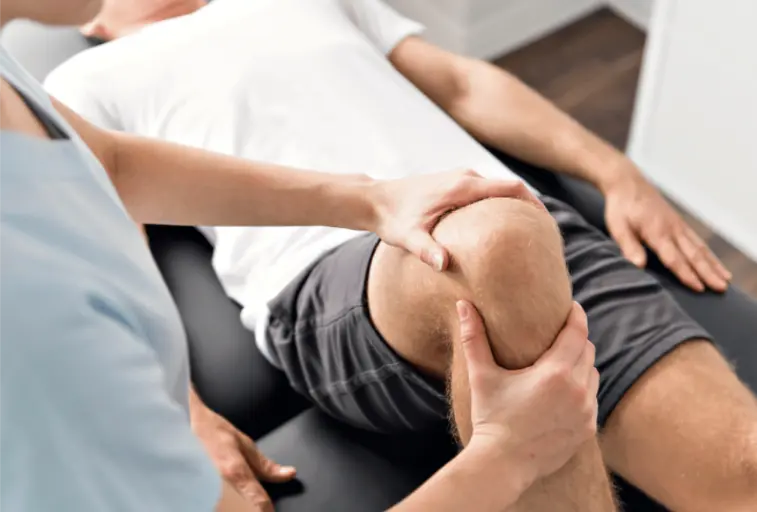SUMMARY:
Pickleball is fun and fast-growing, but it also comes with injury risks. From sprains and strains to overuse injuries, prevention is key. This article explores how to stay healthy on the court with smart warm-ups, conditioning, and proper technique. Learn how sports physiotherapy in Alliston can help you prevent injuries and boost performance.
Main Titles:
- Common Pickleball Injuries
- Tips to Prevent Pickleball Injuries
- The Role of Physiotherapy In Injury Prevention
- Benefits of Injury Prevention
In South Simcoe Physiotherapy’s blog post this month, we are going to discuss the sport of pickleball and how to prevent injuries during the season, so that you can keep playing!
Pickleball is a rapidly growing sport, which people of all ages and all levels of physical ability can enjoy. Pickleball combines elements of tennis, badminton, and ping-pong. Although seemingly similar to tennis, pickleball differs from tennis in multiple aspects, including the degree of running, court size, equipment size and weight, and scoring. However, like any sport, pickleball comes with its own set of potential injuries. Whether you’re a seasoned player or new to the game, understanding how to prevent injuries will help you stay active and pain-free.

Common Pickleball Injuries
Due to the nature of pickleball, injuries often result from sudden movements, repetitive motions, and improper technique. The three main types of injuries are:
1.Contusions and bruises. These make up about 10% of overall pickleball injuries and are due to the slips, trips and falls mentioned above.
2.Fractures make up about 28% of the injuries on the pickleball court. Women are over three and a half times more likely to suffer a fracture compared to men and nine times more likely to suffer a wrist fracture. The most common fractures are to the wrist, elbow and hand.
3.Sprain and strain injuries are the primary diagnosis we see relating to pickleball. Sprains involve joints and ligaments and strains involve muscles and tendons. In this category it is males who are three and a half times more likely to suffer a pickleball related sprain or strain.

Any of these injuries can significantly impact your ability to play pickleball, as well as affect day to day life.
Some of the most common injuries include:
- Ankle Sprains – Quick lateral movements can strain or sprain the ankle.
- Knee Injuries – Pivoting and lunging may lead to knee pain or ligament injuries.
- Tennis Elbow (Lateral Epicondylitis) – Repetitive wrist and arm motions can cause overuse injuries.
- Shoulder Strains – Reaching and overhead shots can lead to shoulder impingement or rotator cuff issues.
- Lower Back Pain – Twisting and bending movements can place stress on the lower back.
- Achilles Tendonitis – Sudden stops and starts may inflame the Achilles tendon.
Tips to Prevent Pickleball Injuries
Taking preventive measures can significantly reduce the risk of injuries and keep you on the court longer.
1. Proper Warm-Up and Stretching
- Warming up prepares your muscles and joints for movement, reducing the likelihood of injury. A good warm-up should include:
- Light jogging or dynamic movements (jumping jacks, high knees)
- Arm circles and wrist rotations
- Gentle lunges and leg swings
- Shoulder and back stretches
2. Strength and Conditioning
- Building strength in key muscle groups helps support joints and absorb the impact of sudden movements. Focus on:
- Leg Strength – Squats, lunges, and calf raises improve lower-body stability.
- Core Stability – Planks, Russian twists, and bridges strengthen your core for better balance.
- Shoulder Strength – Resistance band exercises can help prevent rotator cuff injuries.

3. Wear Proper Footwear
Choose court-specific shoes with good grip, cushioning, and lateral support. Avoid running shoes, as they lack the stability needed for pickleball’s quick changes in direction.
4. Use Proper Technique
- Keep your knees slightly bent and stay on the balls of your feet.
- Avoid overextending your reach—move your feet instead.
- Use your legs and core rather than just your arm when hitting the ball.
- Hold the paddle with a relaxed grip to prevent strain on your wrist and elbow.
5. Hydration and Recovery
- Drink plenty of water to stay hydrated and reduce muscle cramps.
- Take rest breaks to prevent overuse injuries.
- Ice sore muscles after playing and perform gentle stretching to aid recovery.
6. Listen to Your Body
Ignoring pain can lead to more severe injuries. If you feel discomfort, take a break and seek professional advice if the pain persists.
The Role of Physiotherapy In Injury Prevention
Physiotherapy plays a vital role in keeping pickleball players injury-free by focusing on movement efficiency, muscle balance, and proper biomechanics. A physiotherapist can help prevent injuries by:
- Assessing Movement Patterns – Identifying inefficient movements that increase strain on joints and muscles.
- Developing Strength & Flexibility Programs – Tailored exercises to improve muscle stability, endurance, and mobility.
- Correcting Posture & Technique – Ensuring proper body mechanics during play to reduce overuse injuries.
- Providing Recovery Strategies – Offering guidance on stretching, hydration, and recovery techniques to prevent fatigue-related injuries.
- Recommending Supportive Gear – Advising on footwear and braces that can enhance stability and reduce stress on vulnerable areas.

Benefits of Injury Prevention
Physiotherapy plays a vital role in keeping pickleball players injury-free by focusing on movement efficiency, muscle balance, and proper biomechanics. A physiotherapist can help prevent injuries by:
- Assessing Movement Patterns – Identifying inefficient movements that increase strain on joints and muscles.
- Developing Strength & Flexibility Programs – Tailored exercises to improve muscle stability, endurance, and mobility.
- Correcting Posture & Technique – Ensuring proper body mechanics during play to reduce overuse injuries.
- Providing Recovery Strategies – Offering guidance on stretching, hydration, and recovery techniques to prevent fatigue-related injuries.
- Recommending Supportive Gear – Advising on footwear and braces that can enhance stability and reduce stress on vulnerable areas.
Conclusion
Pickleball is an exciting and accessible sport, but injury prevention should always be a priority. By warming up properly, strengthening key muscles, using correct techniques, and wearing the right gear, you can stay active and enjoy the game injury-free. If you have more questions about injury prevention, contact our Alliston physio clinic today!
